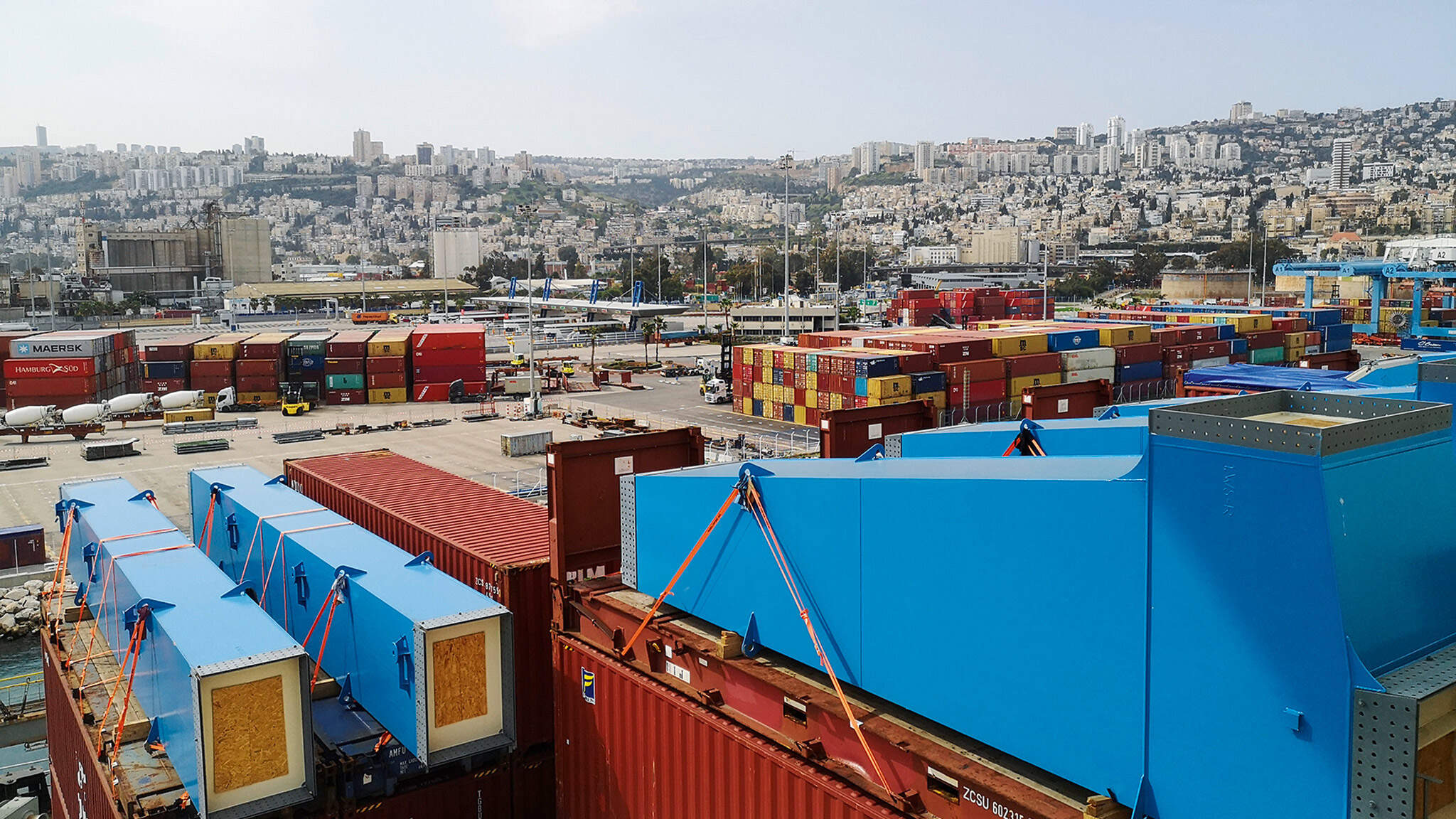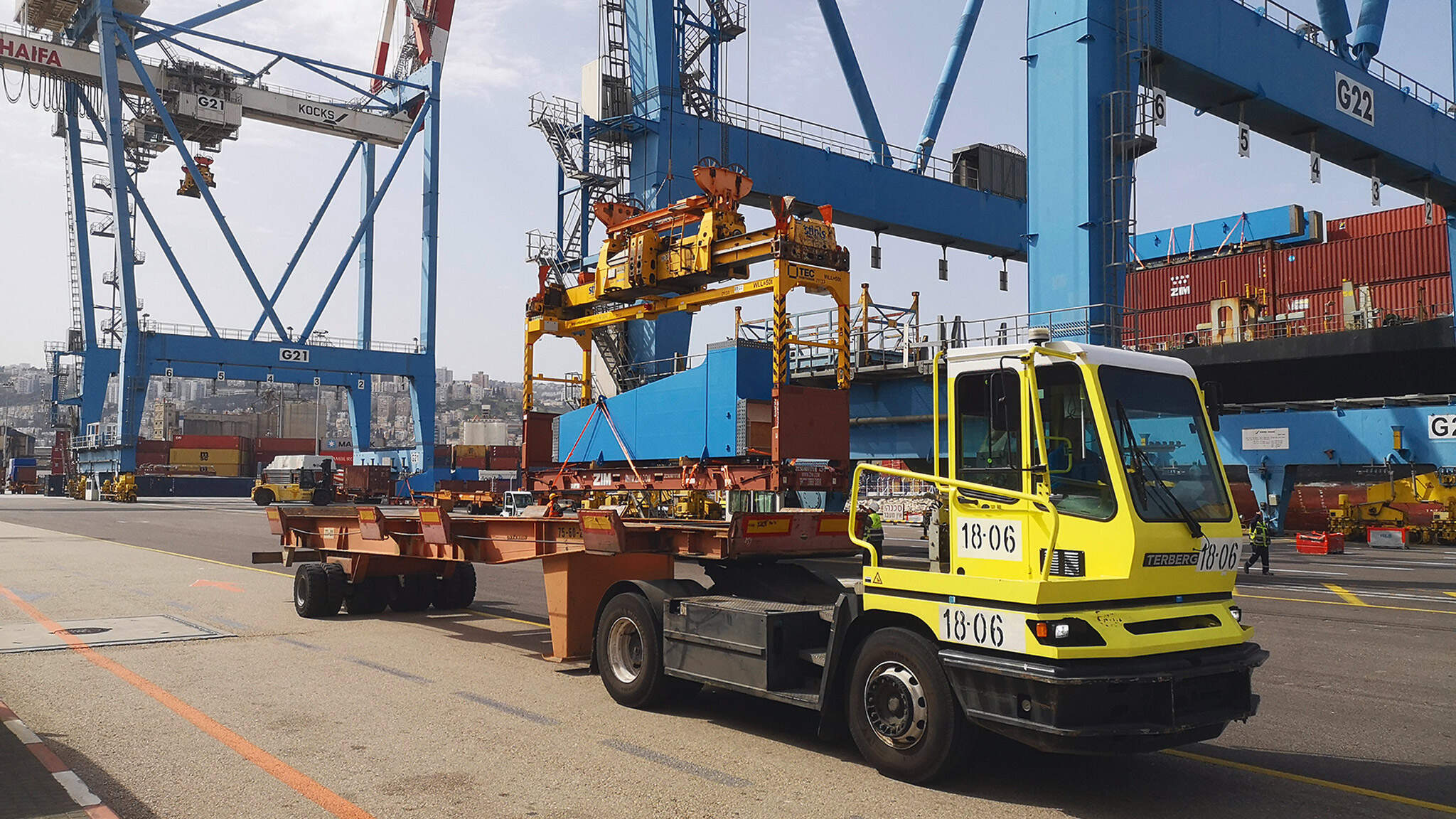From Poland to Haifa – Steel colossus for the Mediterranean
The new container bridges for the Port of Haifa made their way from Poland through Hamburg and on to the Mediterranean Sea. DACHSER Air & Sea Logistics took on the job of transporting these disassembled ship-to-shore container bridges, consolidating various parts from suppliers all over Europe—a project of epic proportions.

They are the giants of the oceans: container ships and supertankers in the Post-Panamax class. These vessels owe their name to the fact that their huge dimensions mean they are too long and wide to fit through the Panama Canal—the shortest route between the Atlantic and Pacific Oceans.
On the eastern shores of the Mediterranean lies the Israeli port city of Haifa, where even these hulking vessels are welcome. Since 2010, Post-Panamax ships have been dispatched from the HaCarmel container terminal, which can berth vessels measuring over 350 meters long. The water at the terminal’s loading piers is more than 15 meters deep; at its oil terminals it can be up to 10 meters deep. To keep pace with work at the dockside, the port recently decided to literally raise its game to a whole other level by ordering four new, extended container bridges from Bremen-based company Kocks Ardelt Kranbau, the global market leader in Goliath gantry cranes and a pioneer in container crane development. Whereas the port’s previous crane solutions can serve seven to eight “stories” of a ship, the new cranes will serve up to eleven—a major leap in the port’s performance and efficiency.
Parts from all over Europe
The scale of the cranes is matched by that of the logistical challenge. “Parts and components had to be gathered from all over Europe and then shipped from Hamburg,” explains Hans-Ulrich Brüggemann, Manager Seafreight Projects at DACHSER Air & Sea Logistics in Cologne. The steel structural elements were manufactured in Poland, 26 container tractors arrived from Antwerp, and individual machine parts came from suppliers spread throughout Europe. “Bringing everything together and orchestrating the processes was a Herculean task,” Brüggemann says. “None of this would’ve been possible without the close collaboration with our trusted partner ICL-Israel Cargo Logistics. From the moment the project got underway, the dedicated phone line connecting the DACHSER teams in Cologne and Haifa has been in constant use. Even now.”
“But that’s also what makes the project so appealing. Provided all the processes are properly in place, even the largest crane almost becomes just another piece of sea freight.”
The parts for the first crane arrived in Haifa in March, for the second in June, and the parts for the third and fourth are expected in September and November respectively. Brüggemann and his Seafreight Projects team received the initial inquiry concerning the project shipment job through ICL in December 2020. “A particular challenge lay in the vast dimensions of the container bridges,” Brüggemann reports. “Even when disassembled, the pieces were on the large end of what can be transported by truck and ship. Some of the individual parts were up to 15 meters long.”

A matter of experience
“When planning a project transport, you have to take many factors into account,” Brüggemann says. “We organize the most efficient tour: everything from precise route planning—which may involve closing off roads—to customs clearance.” Luckily, DACHSER Air & Sea Logistics has specialized project logistics teams on hand that have built up a wealth of experience. For many years, they have taken care of door-to-door processing and have been advising customers around the world on aspects such as route planning or choosing a carrier.
The cranes’ journey took them by truck from the factory in Poland to Hamburg, where the size of the single parts determined whether they were stowed inside closed 40-ft containers or in what are known as open-top 40-ft containers. The extra-wide steel elements were shipped on 40-ft “flat racks”—containers that have two bulkheads, but no side walls or roof—while the extra-long parts were shipped on 40-ft platforms with no walls or roof at all. “This was high-precision work in both planning and practice,” Brüggemann says. “But everything went off without a hitch.”
In Haifa, under the leadership of Amir Levy, Commercial Manager Ocean Import at ICL, the dovetailing teams from ICL and DACHSER ensured that the containers, flat racks, and platforms were transported immediately to the installation site at the port. A fully disassembled lifting frame was imported from Poland specially to erect the cranes; it will be taken back once work is completed in 2022. Thanks to this piece of equipment, the container bridges can be assembled quickly and readied for their work at the terminal.
“Shipping entire container bridges together with parts gathered from all over Europe is a real challenge,” Brüggemann says. “But that’s also what makes the project so appealing. Provided all the processes are properly in place, even the largest crane almost becomes just another piece of sea freight.”